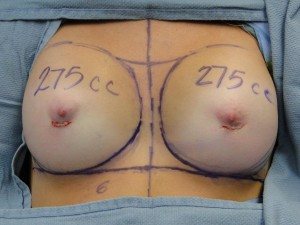Breast Implant Dangers
Silicone Immune Toxicity Syndrome
Overview
 It is estimated that since 1962, between one and two million women have had silicone breast implants to enhance their physical appearance. Some 30 years later, thousands of women are second guessing the wisdom of this choice because they are now suffering with a new illness, silicone toxicity and immune dysfunction syndrome.
It is estimated that since 1962, between one and two million women have had silicone breast implants to enhance their physical appearance. Some 30 years later, thousands of women are second guessing the wisdom of this choice because they are now suffering with a new illness, silicone toxicity and immune dysfunction syndrome.
This major health problem arose because of failure at many levels to protect the well being of humans in our world. I think it is important to understand a little bit about the silicone implant itself, which is covered by a shell or the envelope which is made of silicone in the form of a semi-permeable membrane.
I think the big problem here was that it was thought that this membrane would keep the silicone inside the bag. It does not and the silicone leaves the bag and is found outside of the silicone implant.
As a matter of fact, it has been found all over the body, not just in the capsules surrounding the implant. The silicone is picked up by scavenger cells (macrophages) of our immune system and carried around the body.
Various things happen where the exact mechanisms are unknown, but there is definite immune system dysregulation that occurs leading to a new syndrome. I think that this is an important point.
Until now, researchers have been trying to link this silicone disaster with old diseases of the autoimmune type like scleroderma, rheumatoid arthritis, and Lupus.
In fact, they will never be able to link this problem to those diseases because we have the new disease and they are not looking at it in that way. I will go on to describe the characteristics of the new disease, but to try and link them to the old disease will get you nowhere. I don’t know why researchers think that this is the direction to follow.
I think that in addition to the immune system being dysregulated. (I won’t go into the details which explain how that happens), there is the onset of molecular damage called free radical or oxidant injury that occurs from the silicone being in the body.
This causes another set of symptoms that are part of the syndrome. There are so many possible symptoms that the patient experiences. We will mention only the major ones. They are:
As I said, these are the major symptoms and there are others. When a patient suffers with the above type symptomatology and also has a history of breast implants, one should do a thorough evaluation looking at the comprehensiveness of an environmental history and physical examination. One should rule out diseases like Lyme disease, multiple sclerosis, etc.
Studies of the immune system includes T-cell silicone immune study, silicone antibodies, complete auto immunity studies, immunoglobulin investigation, immune complex studies, biochemical profiles, fungal and bacteriological studies and skin testing.
In addition, more complex studies might include PET, SPECT, beam, and EMG studies of the nervous system, as well as pulmonary function tests, MRIs of the breasts, and comprehensive digestive, and pancreatic studies if so indicated.
The therapy for these patients needs to be directed at the flaws that are found in the patient’s biochemistry and immune systems. Just to mention a few of the areas that should be looked into as far as therapy, one would include:
This is a very complicated illness and should only be taken care of by people with the comprehensive background in dealing with toxic environmental materials and their effects on the human organism.
With this knowledge, these patients can be helped greatly in achieving a normal life again. It just takes time, patience, and hard work. The answer to this disease is not the use of drugs for the symptoms that occur.
Continue reading for more information on the impact of Silicone Toxicity on system functioning and breast implant dangers.
Cause
There are several forms of the chemical in breast implants that can cause a problem in the human organism. Silicon (Si) is the basic element and probably causes immune system changes.
Silica or SiO2 (chemical formula) is the form it is mined from the earth. Silicone gel is a synthetic material containing 38% silicon. The silica is 45% silicon.
There is slow leakage (“bleeding”) of the silicone gel from the implants through the semi-permeable membrane envelope and also into and through the capsule that surrounds the implants.
This is picked up by the microphages (scavenger cells) of our immune system and is broken down inside these cells which travel all over the body. The gel breaks down inside these cells, which travel all over the body.
The gel breaks down into Silica and Silicon which causes an immune system dysregulation. Thus, there are antibodies produced against the silicon and also against the silicon and protein complex (organ systems) so that you get autoimmune illness.
As well, there is also damage that is not related to the immune system, because the silicone gel causes oxidants (damaging molecules) to be produced that directly damage our cell walls, DNA, and enzyme systems.
All of this adds up to slowly-developing chronic debilitating illness affecting every organ system of the body.
Symptomatology
There are so many possible symptoms that the patient may experience. I shall only mention the major ones here.
Almost any symptom can be related to this syndrome, either directly or indirectly.
How Is This Syndrome Evaluated?
Immunological And Non-Immunological Damage
Damage to the immune system leads to various autoimmune situations. Direct damage from free radical oxidant molecules leads to diffuse organ system damaging effects.
Therapy
Breast Implant Surgery – Breast Implant Dangers
Just what are the breast implant dangers?
Silicone gel implants were banned in 1992. Though saline implants have been the method of choice, new research has revealed some shocking dangers associated with them, also. The manufactures themselves, in data presented to the FDA recently admitted:
• 60% of women with saline implants have complications within four years • 3% suffer leakage within three years causing a deflated implant
• 8% of implants have to be removed within three years
Other risks include:
• Hardening of the breasts
• Loss of sensation in the nipple or breast
• Shifting of the implant from its original position
• Interference with mammography reading that may hamper cancer detection
On top of all this, says Judith Reichman, M.D., a regular contributor to NBC’s Today Show, implants are a man-made prosthetic that have a shelf life. Most women will have to go through the whole procedure again probably two or three times depending upon their age.
Her articles presented on the msnbc.com web site, in association with the Today Show, give the best overview that we have seen regarding the dangers of breast implants.















Leave a Comment